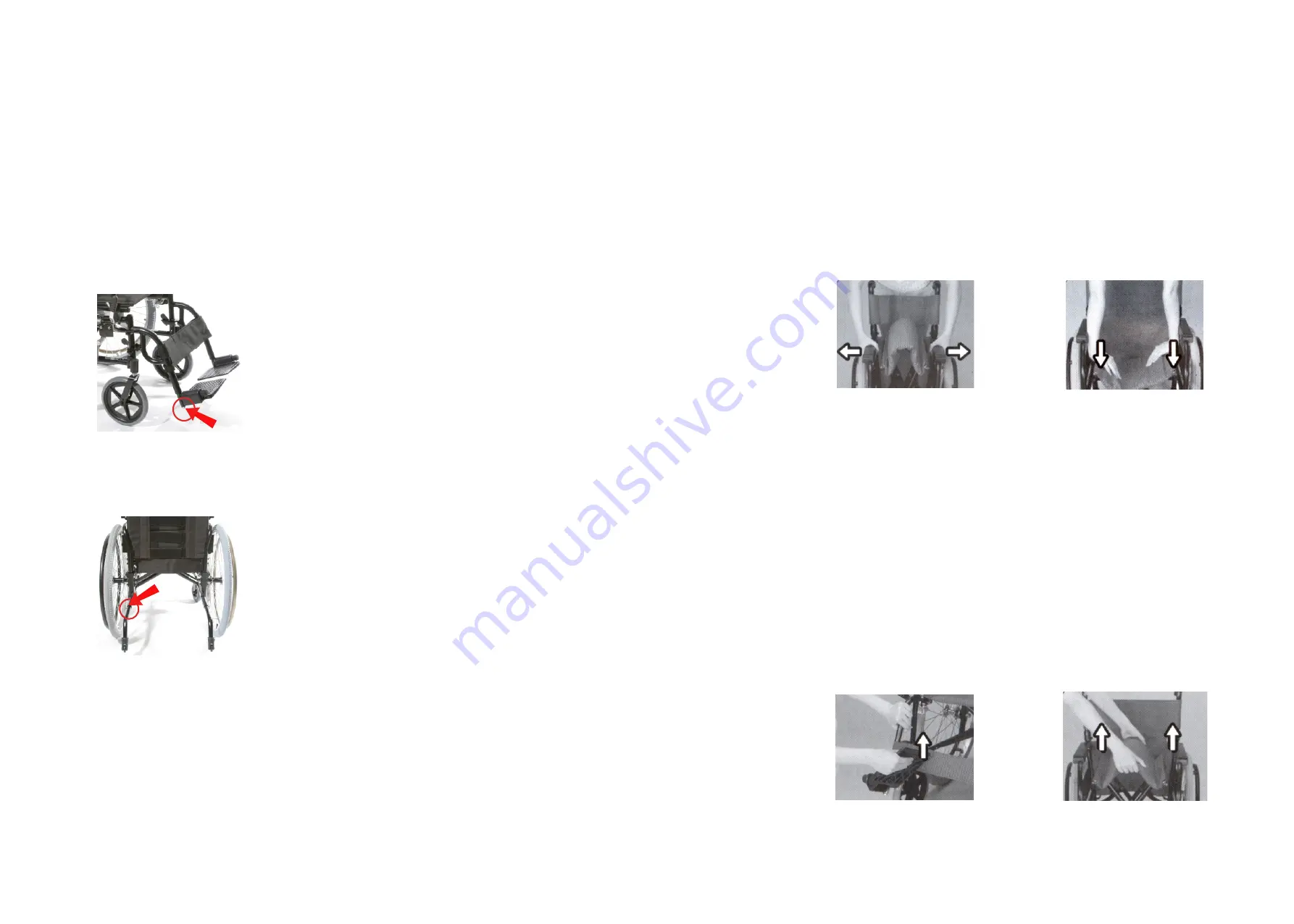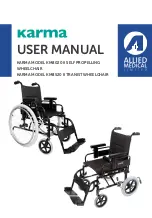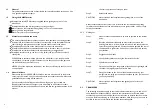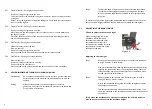
4.
MAINTENANCE
4.1
CLEANING AND TYRE CARE
4.1.1
Cleaning
Clean the upholstery with a biological cleaning agent such as is recommended for
cleaning kitchen work surfaces. Do not use any propriety cleaning fluids as these may
damage the upholstery. Clean chrome and painted surfaces with a wax polish spray
or simply wipe over with a clean soft duster.
4.1.2
Tyres
The KM8000 manual wheelchair is fitted with a maintenance free castor and 12 ½” x
2 ¼” pneumatic rear tyre (transit wheelchair) or a 24” x 2 ¼” pneumatic rear tyre
(self-propelling wheelchair). It is advisable to check the air pressure of these
components every two weeks. This can be done either at a service station or with a
standard bicycle pump.
4.2
MAINTENANCE CHECKS
Every week check the following items for damage or excessive wear:
Upholstery and occupant restraints where fitted.
Every month examine the following items for effective operation e.g. damage and
general wear and tear:
Seat and backrest cushions
Armrest latch lever and clamp handle
Armrest pads
Brakes
Antitippers
Castors for free rotation of castor wheel and castor unit
Tyre tread depth
For repairs, please contact your service contractor.
2.1.3
Footrest Adjustments
Footrest Removal and Refitting
To remove the footrest push/pull the release lever and rotate the footrest until it faces
outwards. To lift off, pull upwards.
To refit, locate the footrest unit onto the frame lugs (at about 90 degrees to the side of
the frame) and rotate it inwards until the unit locks into place (you will hear a click).
CAUTION:
The occupant's leg must be supported or resting safely, while
executing the above adjustments.
To adjust footplate height
Step 1:
To adjust footplate height, use tool
provided to loosen the bolt at the
bottom of the footrest stem.
Step 2:
Adjust to the required height and
retighten.
2.1.4
Antitip bars for wheelchair
NOTE: For the users safety, these must be fitted.
To fit: Depress rear location button on the antitip bar
and slide into rear of frame tube. The front button
MUST engage through the hole in the frame. Check
antitip is secure by attempting to push backward and
forward. Follow these instructions to fit the atnitip bar
on the other side of the wheelchair.
2.2
GETTING IN AND OUT
2.2.1
Getting in
Step 1:
Engage both brakes.
Step 2:
Lift up the footplates and swing footrest to the side.
Step 3:
The user should now lower themselves into the seat using the
armrests as supports (if possible).
Step 4:
Push the footplates back down and re-locate the footrests so that
Page 3
Page 12
E
F
G
H
A
B
C
D
A
C
D
H
G
B
I
E
J
2.
WHEELCHAIR OPERATION
2.1
PREPARING FOR USE
2.1.1
Unfolding the wheelchair
Step 1:
With the wheelchair in front of you, take hold of both the armrests
and pull them apart until the backrest is almost completely open.
Step 2:
Place hands on the top of the seat support rails with your fingers
pointing inwards and push down until the seat is completely open
and the seat rails are fully located in the retaining cups.
CAUTION:
When completing step 2, never put your fingers around the sides or
under the chair as they can become trapped between the seat rail
and the frame.
2.1.2
Folding the wheelchair
Step 1:
Flip up the footplates.
Step 2:
Un-velcro the backrest from the seat.
Step 3:
Put fingers under the middle of the seat at both front and rear,
grasp and give a sharp pull upwards until the wheelchair is nearly
closed. Never grasp from the sides.
Step 4:
Push the armrests together.
Step 1
Step 2
Step 1
Step 3
Page 2
Page 13
14
15



























